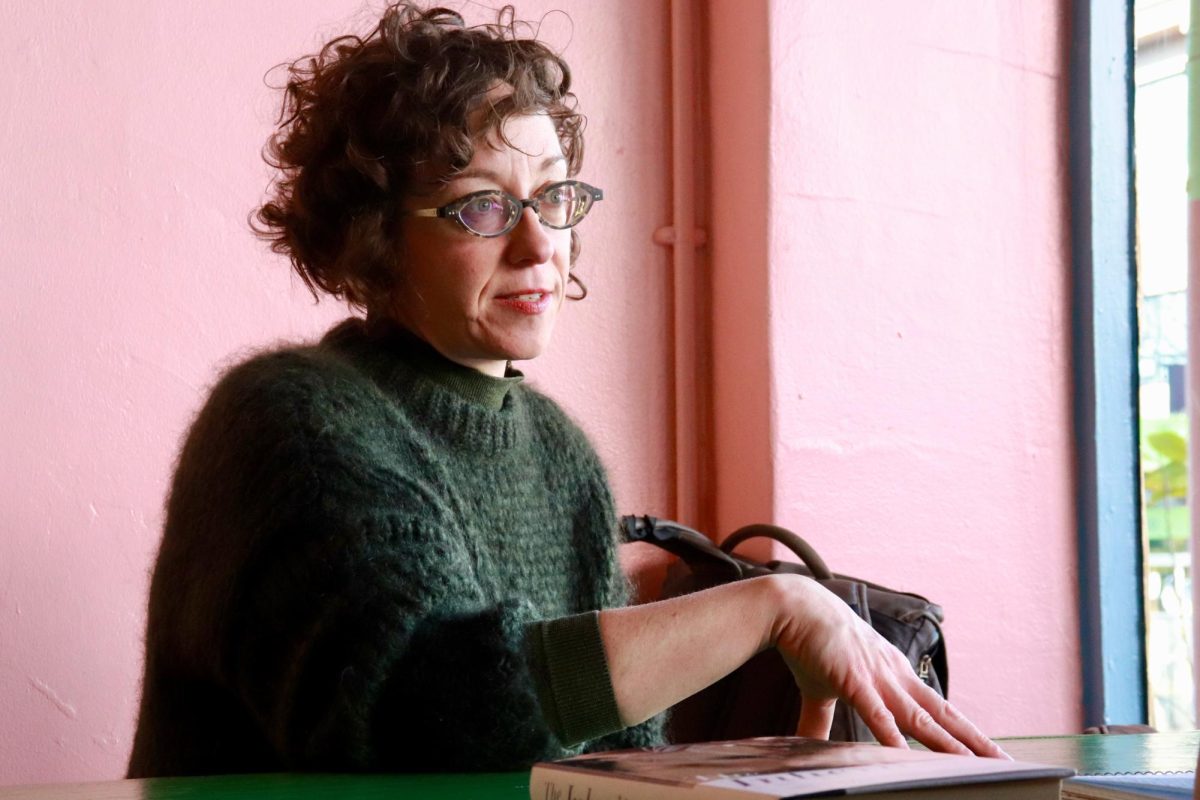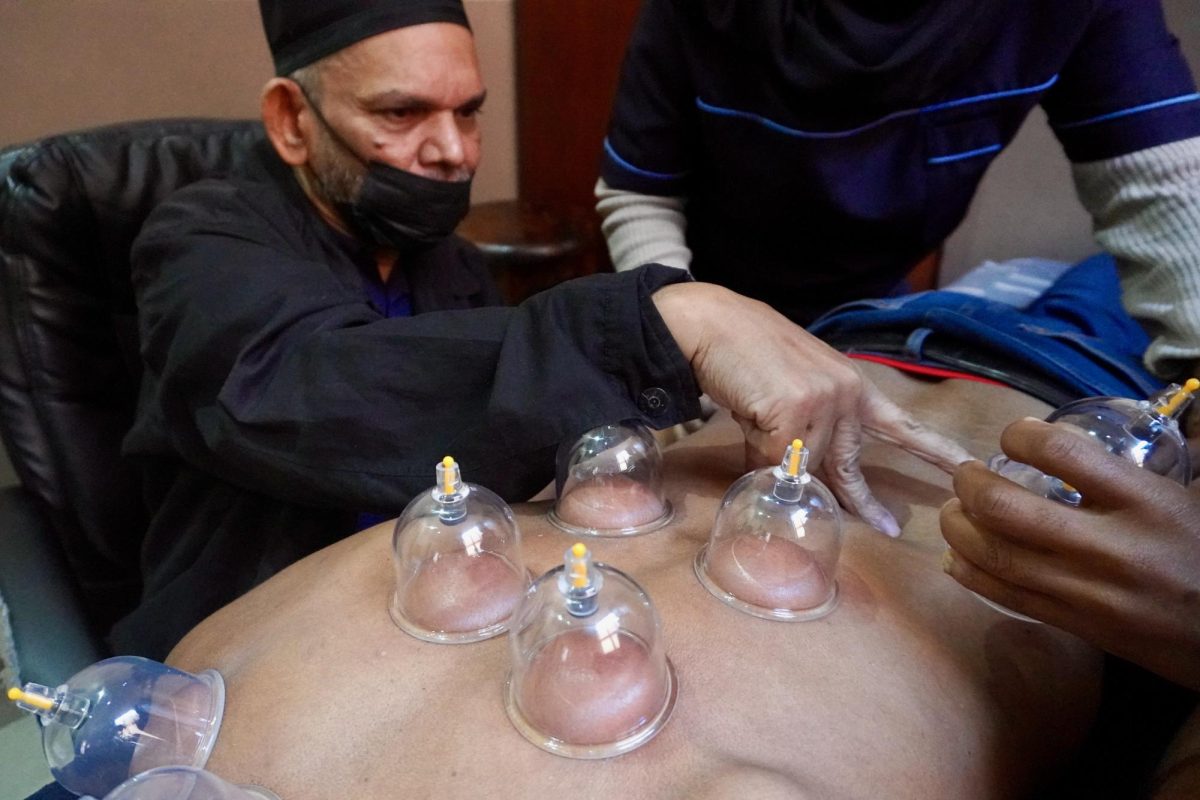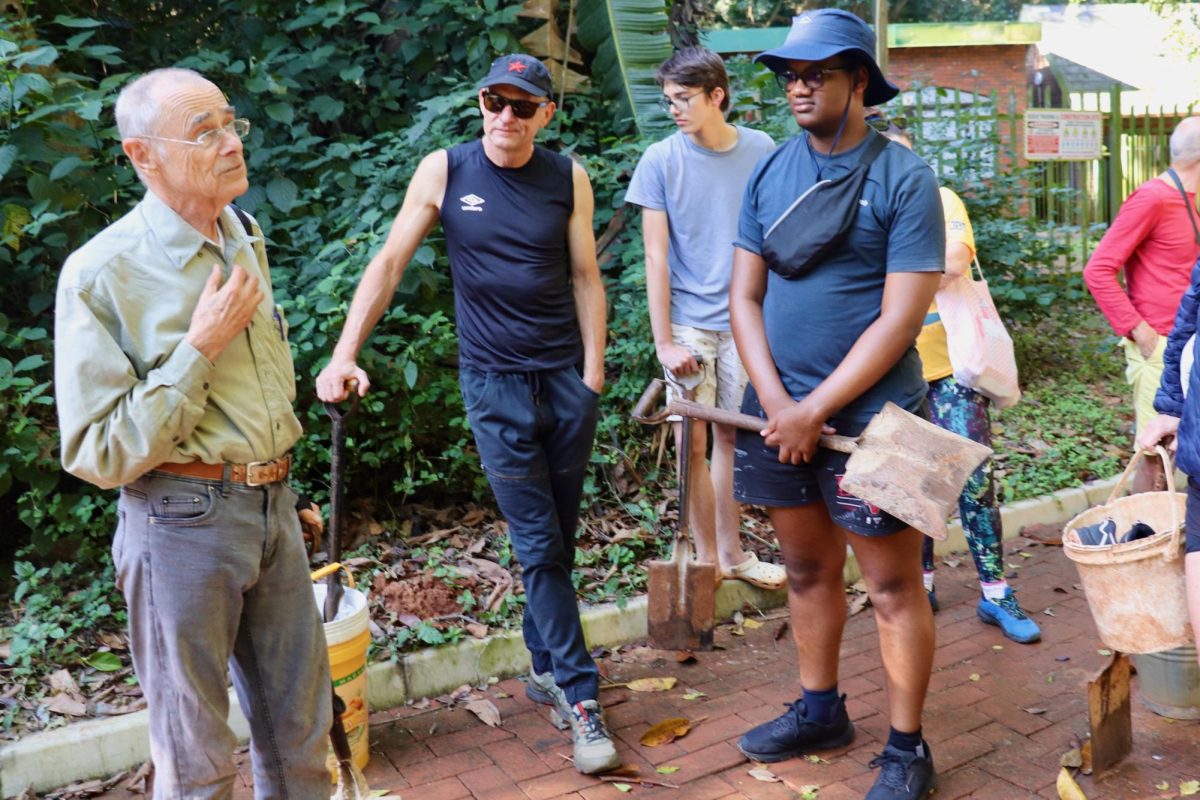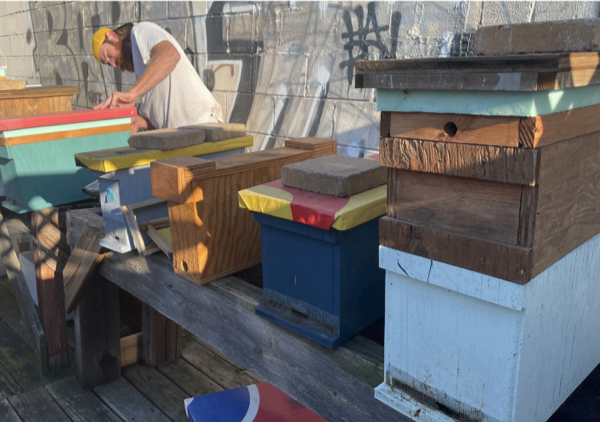What I expected to be a loud, overwhelming buzz turned out to be a dull, yet consistent, hum, like that of a home appliance.
Only, I wasn’t at home. I was on a rooftop on Wellington Street in the Tacony neighborhood of North Philadelphia, surrounded by about 20 wooden hives. I could only see about a hundred or so of the honeybees who live in the hives and were responsible for the hum. Thousands of others were busy at work inside their rainbow of brightly colored boxes.
“I love having people come and take a look because it does give you a whole new appreciation for everything,” local beekeeper Craig MacCorkle told me as he showed me around his 50-hive rooftop apiary. “There’s a lot involved, not just the bees themselves and the honey, which is all great, but the whole process that they work with in nature.”
The apiary was behind MacCorkle’s warehouse, at about rooftop level. He led me outside and up a wooden staircase where, right in front of me, bees were buzzing all around. It took everything I had not to flinch every time I heard the low buzz of a busy bee remotely in my vicinity (which was constantly).
You can imagine my shock when we ascended the steps to the hives with no protection: no white beekeeper’s suit, no head cover, no gloves, nothing.
MacCorkle told me, as he began to open hives, that in the spring and fall, protection is not needed because the bees, to my relief, are “preoccupied.” They are busy working in the hives, unlike in midsummer when blooming is done and their resources begin to dry up.
“You can see, they’re gentle,” MacCorkle said as he showed me a honeycomb. “I can literally touch them. They’re not crazy and aggressive. They couldn’t care less about me.”
I’ve been hearing “Save the bees!” for years, knowing vaguely that bees were in trouble and convinced that beekeepers had something to do with saving them. I found MacCorkle on the Philadelphia Beekeepers Facebook group, and when he invited me to visit his apiary, I eagerly accepted, excited for a first-hand look at his rescue operation.
Only, as I learned in preparing for my visit, MacCorkle isn’t rescuing bees at all. Commercial beekeeping, which MacCorkle does, is about tending to bees in manufactured hives in order to sell honey.
“When you hear that phrase, ‘save the bees,’ that’s not talking about honey bees,” MacCorkle said.
Beekeeping does nothing to help or conserve bees, confirmed Marla Spivak, Ph.D., professor of entomology at the University of Minnesota.
“Honey bees should be kept for honey production or pollination, and not because people think they’re helping the environment,” Spivak said.

Honey bees, it turns out, are native to Eurasia. “Save the bees” refers to the thousands of bee species native to North America, Spivak explained. Because there are no historical surveys, scientists do not have the metrics to compare how many native species there have been in the past and how many there are now, according to Spivak. However, scientists are certain that recent environmental destruction is disturbing and affecting these species.
“Many of [these] are solitary species that nest in the ground or in twigs,” Spivak said. “Their nest sites are disturbed by tilling or pavement, urban people, urban development, rural plowing and development.”
Although honey bees are a good source of pollination, since they are not native to this continent our ecosystem could exist without them, according to Justin Shiffler, beekeeper and owner of Hat Trick Honey in Pottstown. Not to mention, since they are continuously being bred by beekeepers, they are in no means endangered.
“More beekeepers and more honey bees is not the solution to any problems we face,” Shiffler said.
Shiffler began beekeeping under the same misconception that I had: he thought he would be helping to save bees.
“We didn’t know that until our second or third year of beekeeping,” Shiffler said. “Once we learned that, that kind of both-
ered me. Like okay … what else is being misconveyed or not adequately conveyed in other teachings?”
The real answer to “saving the bees,” is taking actions such as making sure not to disturb wild bees nesting in home gardens, and planting flowering trees, which will provide wild bees nutrition.
I could do that. Some day.
But for now, in the middle of the rooftop apiary, bees buzzing all around, I found myself happy that these bees didn’t need saving after all.








































